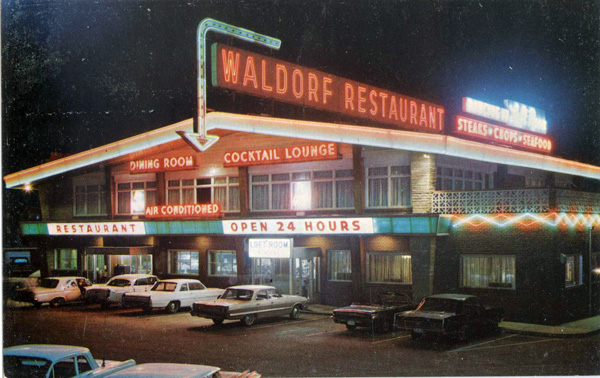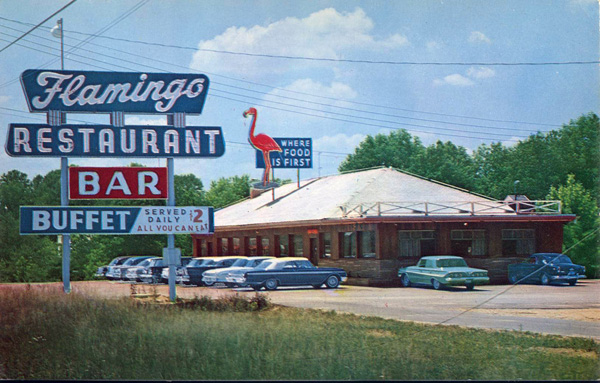Picture this: Gaudy neon casino signs one after the other along the highway. Nightclubs, fancy restaurants, and a who’s-who of the entertainment industry. Slot machines in nearly every business, from barbershops to groceries to dry cleaners.
Sounds like the Las Vegas Strip, right?
Think again. This was Route 301 through Charles County in the 1950s and 60s.
Known as “Little Vegas” or “Slot Machine Alley,” the stretch of 301 from the Charles County line to the Potomac River Bridge was a hopping runway of casinos, restaurants, and clubs. In 1961, two years before the slot machines were outlawed by the state, Charles County had 1,926 machines in 2014 establishments. It was the Mecca of casinos in Maryland.

Photos via user addclinton on Flickr
And while Charles County led its Southern Maryland neighbors in number of machines, Anne Arundel, Calvert, and St. Mary’s counties held their own. Each had hundreds of machines in establishments within their own borders. For these four counties in the southern part of the state, slot machines provided an economic boom.
Creative Virginia municipalities even got into the act, building casinos on long piers that stretched from Virginia into Charles County waters. This was outlawed by the state of Maryland in 1958.
Who performed along Slot Machine Alley? Conway Twitty, Dolly Parton, and Fats Domino, to name a few. Locals told the Washington Post in 1996 that when gambling was at its height, there were many fine restaurants and nightclubs. Tourists made Waldorf and Charles County a destination, and others traveling Route 301 to Florida would stop along the way.
At its peak, the Post reported, gambling in Southern Maryland was said to gross a whopping $26 million a year. It brought jobs to the region as well as controversy and political opposition to the slot machines.

Photos via user addclinton on Flickr
Casino gambling was outlawed in the state in 1963, to be phased out by 1968. To help ease the economic blow to the counties, the state agreed to build a bridge over the Patuxent River to connect Calvert and St. Mary’s counties. The Tri-County Council was also established at this time to help promote Southern Maryland’s interests and economy.
Hints of Southern Maryland’s wild casino history linger along Route 301. Aqua-Land, which sat on the shores of the Potomac River, became a campground and casino. You can still see the signs along 301. For many years, Walls Bakery operated in the old Wigwam casino building, it’s teepee out front intact while the famous eclairs were sold inside. That building has been torn down, and the bakery has moved to Old Washington Road. The Waldorf Motel on the northern end of Route 301 in Charles County was also a casino, restaurant, and hotel; it is currently being torn down.
Waldorf MD Homes for Sale and Real Estate Services in Southern Maryland. You now have a search engine to help you with your Southern Maryland home search! And I’m ready to provide you with a custom home valuation if you’re considering selling your home. Let’s connect to discuss how I can help you. Contact Kimberly Bean at 301-440-1309





